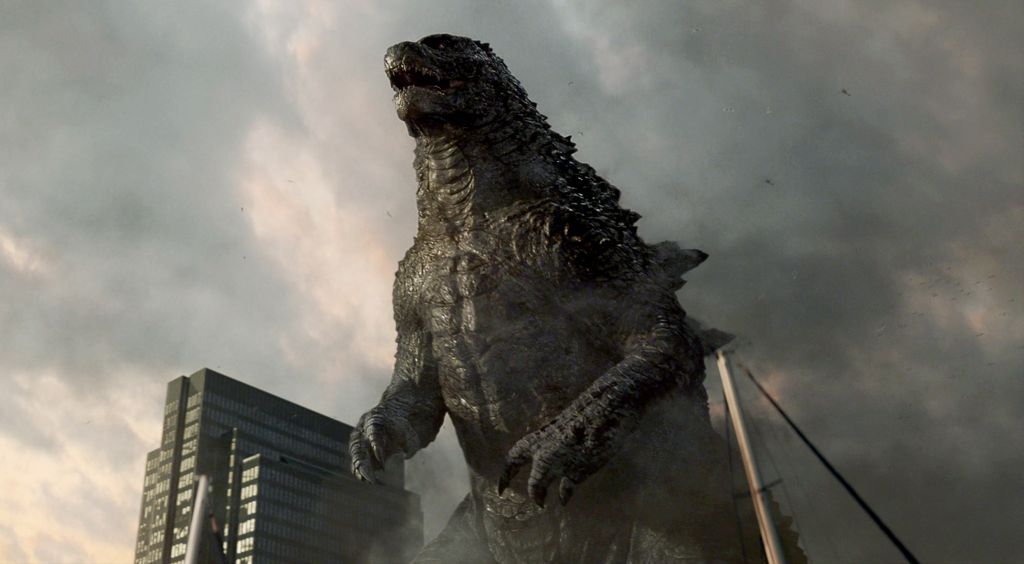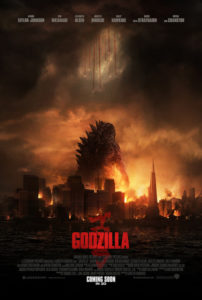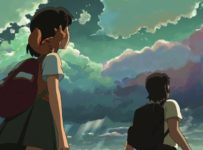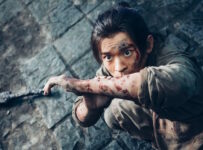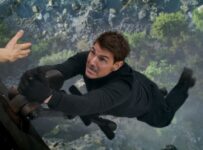A reboot that takes its time, but knowingly pays tribute to the rich history of a character that’s stomped his way out of the past and into our lives.
[stextbox id=”grey” caption=”Godzilla (2014)” float=”true” align=”right” width=”200″]
Director: Gareth Edwards
Writer: Max Borenstein
Runtime: 123 minutes
Starring: Aaron Taylor-Johnson, Ken Watanabe, Elizabeth Olsen, Bryan Cranston, Juliette Binoche, Sally Hawkins, David Strathairn,
Distributor: Roadshow Films (Australia)
Country: US
Rating: ★★★★
More info
[/stextbox]
It has been 60 years since Gojira first stomped his way out of Tokyo Bay and into the hearts and minds of kaiju fans all over the world. Inspired by early American giant monster movies, it would in turn launch a series of Japanese films that currently stands at 28 entries, not to mention copycats Gorgo, Gamera and Cloverfield (to name but a few) and a 1998 US remake. The character was not simply another monster, but the king of monsters, initially a symbol of Japanese post-war anxiety and a nightmare from the nuclear age. This history is something director Gareth Edwards is acutely aware of, with his debut 2010 feature Monsters both paying tribute to and subverting the rich tropes of the genre. In Godzilla, Edwards reminds us why all other monster mash-ups are mere pretenders to the throne.
In 1999, intrepid scientists Ichiro Serizawa (Ken Watanabe) and Vivienne Graham (Sally Hawkins) discover two pods inside a giant skeleton in the Philippines. Shortly after, Joe Brody (Bryan Cranston) loses his wife (a blink-and-you’ll miss her Juliette Binoche) during a nuclear meltdown in Tokyo. Years later, Brody’s adult son Ford (Aaron Taylor-Johnson) returns home from the navy to his own wife (Elizabeth Olsen) and son. However, when he is summoned back to Tokyo following his father’s arrest in the contaminated zone that was once their home, all hell breaks loose when a Massive Unidentified Terrestrial Organism (MUTO) is awakened.
Throughout Monsters, Edwards carefully paced his narrative so that the big smashy things were heard and barely glimpsed, focusing instead on the two humans just trying to get home. Max Borenstein’s screenplay recalls elements of the 1954 Godzilla, at least as far as withholding the reveal of the main monster until deep into the second act. Instead, he mostly focuses on Ford barely surviving one encounter with a MUTO after the next, which will be the first great surprise of the film for those expecting another rampage in the streets of Tokyo. The measured pace is refreshing when compared with last year’s Pacific Rim, a film that came crashing through the cinematic landscape with all the nuance of a sledgehammer.
Yet the approach is sometimes a mixed blessing. For every time the audience will be white-knuckling their way through a tease of an encounter, there’s a score of moments where the humans barely get out by the skin of their teeth. These moments vaguely recall the Roland Emmerich school of suspense, right down to a canine in peril, and occasionally feel like they are going through the motions. None of the humans are terribly well rounded or developed, with the women in particular (Juliette Binoche, Sally Hawkins and Olsen) criminally underused and treated perfunctorily as either cheerleaders, loved ones in peril or simply for exposition. The men don’t fare much better: Watanabe, for example, is reduced to (admittedly awesome) one-liners.
Ultimately, it’s the big guy that punters will be laying down their coin for, and it’s here that Edwards displays his knowledge and reverence of the rich history of Godzilla. The deliberate pacing culminates in the reveal of the biggest and most technically impressive renderings of the monster to date, and a showdown scene that stands up there with some of the best confrontations in kaiju history. This may not be your grandaddy’s Godzilla, but it’s a pretty close relative.

